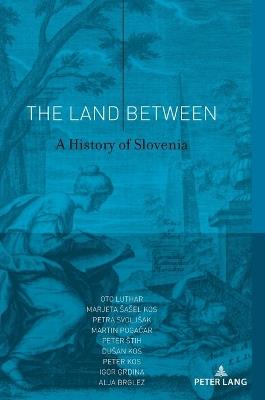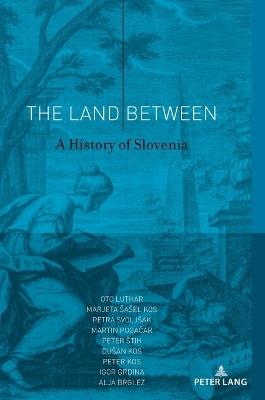L’articolo è stato aggiunto alla lista dei desideri
IBS.it, l'altro eCommerce
The Land Between: A History of Slovenia
Cliccando su “Conferma” dichiari che il contenuto da te inserito è conforme alle Condizioni Generali d’Uso del Sito ed alle Linee Guida sui Contenuti Vietati. Puoi rileggere e modificare e successivamente confermare il tuo contenuto. Tra poche ore lo troverai online (in caso contrario verifica la conformità del contenuto alle policy del Sito).
Grazie per la tua recensione!
Tra poche ore la vedrai online (in caso contrario verifica la conformità del testo alle nostre linee guida). Dopo la pubblicazione per te +4 punti
Prezzo minimo ultimi 30 giorni: 137,67 €



Tutti i formati ed edizioni
The Land Between is the first concise history of Slovenia and Slovenes written in English by leading scholars from the country. The authors base their arguments on Slovenian, former Yugoslav, and Western sources to provide a comprehensive account of Slovenes’ political, social, economic and cultural history, from early Slav settlements to the present day. The authors focus on Slovenian history but, to their credit, manage to place it in a wider context of empires and states to which Slovenian lands had belonged throughout history. The book will be of use to students of Slovenia and East-Central Europe, to diplomats, journalists, tourists, and anyone interested in this part of the world. It represents a welcome addition to the historiography of Slovenia and former Yugoslavia as well as a unique insight into the state of scholarship in post-1991 Slovenia. Dejan Djokic, historian, National University of Ireland, Maynooth A study which makes the reader feel and understand that since the end of the Cold War there is a new lease of life for Central Europe. The former borderlands between East and West construct their new identities. Slovenia is one of the most successful new democratic societies in the middle of Europe. This book is an excellent history of Slovenia which maps the narrative of a small European people without falling into the traps of national mythmaking. Writing about a small European country with two million inhabitants which crave for Central European, Mediterranean and Balkan traditions at the same time is no simple task. The book makes fine reading for everybody interested in understanding the fascinating and creative complexities in the heart of Europe. Highly recommendable for history lovers and historians alike! Emil Brix, historian and ambassador, Director of the Diplomatische Akademie Wien – Vienna School of International Studies The book presents a concise and intelligible history of the Slovenes. The authors take into due consideration the history of the territory between the Eastern Alps and the Pannonian Plain, starting with the period that began long before the first Slavic settlements. Thus, they wish to emphasize that the Slovenes’ ancestors did not settle an empty territory, but rather coexisted with other peoples and cultures ever since their arrival in the Eastern Alps. This has enabled them to build a community shaped by countless influences stemming from a long period of living alongside German, Romance, and South Slav neighbors in a melting pot of languages, cultures, and landscapes. The same reasons have most probably also contributed to the perception of their land as a “land in between.” Constituting a link between Eastern and Western Europe, Slovenia has recently also been increasingly perceived as the meeting point of Central Europe and the Balkans. Today, history still occupies the central position in the life of the Slovenes. The heroic period of emancipation has been completed and the Slovenes will be bracing themselves for a no less turbulent period of challenging “essentialist” notions of identity in order to create a thoroughly open society.
L'articolo è stato aggiunto al carrello
L’articolo è stato aggiunto alla lista dei desideri


